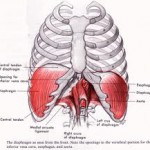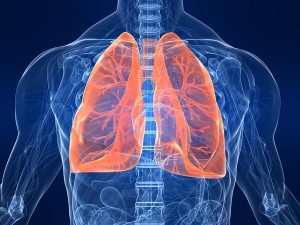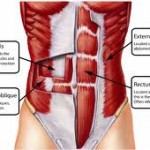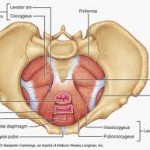Breathing Right – the basis to good core stability
Everyone has probably heard the term “Core Strength”. In the last ten years it has become a common term used to describe muscles that stabilise the spine, torso and abdomen. These muscles include the inner core transverse abdominus, pelvic floor, diaphragm and multifidus and the outer core including the rest of the abdominals, erector spinae, and other large muscles of the pelvis and hip.
Diaphragm Role
The diaphragm’s role in control of postural has been the focus of research in recent years. The results suggest that the diaphragm has a role in trunk stabilisation and this role is co-coordinated with the other deep stabilizers particularly the transverse abdominis and pelvic floor muscles. Therefore good diaphragmatic activation is necessary for good trunk control.

The Anatomy of the Diaphragm
The diaphragm is the main muscle for respiration. The diaphragm is a muscle similar to the other muscles in your body. When you consider the anatomy of the diaphragm it is clear why researchers are interested in its trunk stabilization role. There are two parts to the diaphragm muscle – The central (crural) portion attaches on the thoracolumbar fascia across your back as well as the front of the discs of lumbar vertebrae in your spine. The outer diaphragm (costal portion) attaches to the lower six ribs and interdigitates with the transversus abdominus muscle.
Good breathing patterns involve recruitment of both portions of the diaphragm – this means that your lower ribs should move outwards. If your ribs are not moving outwards it means you are under recruiting the outer (costal) portion of your diaphragm. Thus you are only recruiting the central (crural) portion of the diaphragm – the part that attaches to your spine. This puts more pressure on your spine. An analogy I like to use is that you have put up your tent using only the center pole and you have not pegged out your side ropes. This puts a lot of pressure on your centre pole (the spine) and makes it more unstable.
There are generally two patterns of poor breathing that lead to spinal pain. One is where you breath too much into the upper chest – this puts more pressure on you neck as well as your low back. The other is where you breath too much into the lower abdomen putting pressure on your lower spine and pelvic floor.
 Tips to Activate your Diaphragm and make it work correctly
Tips to Activate your Diaphragm and make it work correctly
Sit up tall with your hands resting on your lower ribs. Take a deep breath in and you should feel your lower ribs move outwards. If this does not happen try to close your mouth and take a big sniff in through your nose, this should assist diaphragm recruitment.
If you are still having trouble with good activation of your diaphragm you may benefit from assessment with one of the physios at Gold Coast Physio and Sports Health.
To assist in maximising all of your deep stability muscles helping you breathe correctly, stabilise your back and trunk and relieve pain, you may like to join us for Pilate’s classes. To make an appointment call us on 07 5500 6470



